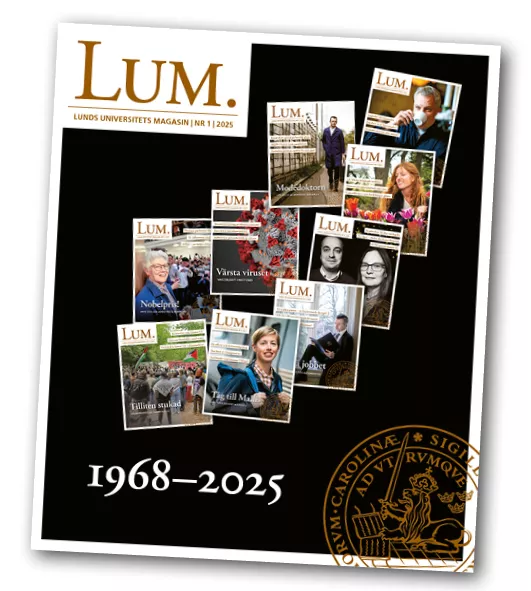When the Royal Swedish Academy of Sciences announced that Lund researcher Anne L’Huillier was one of this year’s three Nobel Prize winners in Physics, the phones of Per Eng-Johnsson and his colleagues in Lund started ringing off the hook. The media wanted their fair share, but even more of the calls were congratulations from near and far, not least from researchers in atomic physics at other universities around the world.
“They are so genuinely happy and feel like they are a part of it. ‘Can you believe it, we got a prize for attosecond physics,’ someone wrote to me,” says Per Eng-Johnsson.
A huge success for the research field
“The fact that our particular field of research has reached Nobel Prize level is a huge success regardless of who actually wins it. I think Anne would agree with me on that.”
LUM interviews Per-Eng Johnsson the day after the announcement. He is convinced that the excitement will last for a while, but eventually, things will return to normal and nothing will have really changed.
“I think we will continue to work as usual. For us researchers, nothing has become more or less interesting than it was before. By the way, do you know what Anne is doing right now as we speak? She is teaching,” he says and continues:
Will not change everyday life
“She is determined not to let this prize change her everyday life, which sums her up both as a researcher and as a person. Her priority isn’t the size of her audience or her visibility. Alongside her family, research and teaching are what is important to her.”
What is it like working with Anne L’Huillier?
“Fantastic! Twenty years ago I was her doctoral student, then I went abroad for a while before coming back to Lund in 2009. We have worked together since then.”
"She empowers young researchers"
Nearly 30 people organised in four research teams work on attosecond-related research at Lund. There is extensive co-operation between the teams, says Per Eng-Johnsson.
“Anne is the one who has built this up.”
Describe her as a researcher.
“She is extremely dedicated, curious and creative. She is a research leader who somehow has time for everything. She can be sitting with a model and analysing it in the most minute detail one minute and the next be an incredibly inspiring supervisor or lecturer.”
“What struck me already 20 years ago is that she is extremely humble. She always admits if she doesn’t understand something. It is hugely empowering for young researchers at the beginning of their careers to have a researcher at her level, a Nobel Prize winner, who admits that she doesn’t know everything and always wants to learn more.”





